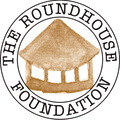Curriculum Introduction
A brief introduction to the curriculum Anna Scherer built based on the reporting of the Science Story class effort to tell some stories of the Holiday Farm Fire.
LIVING WITH FIRE
Human and Earth Systems
By Anna Scherer
One of the earliest field trips I remember going on was to the Tillamook forest. As a child it was an enchanting view, watching through the bus windows at trees that dwarfed me. As with all field trips though it was not supposed to be a reprieve from our school, but rather an educational experience. Even in the middle of the woods they found a way to bring school to us. Several dozen students shuffled single-file into a darkened theater, past the gift shop where I stared longingly at a stuffed otter. Once inside we learned about the Tillamook burn. Black and white photographs danced in front of our eyes containing sights many of us had yet, and hopefully would never, experience. Buildings completely collapsed, trees burnt to black charcoal even darker than what could be captured on film. With all the images of Smokey the Bear pasted up in and around the forest it should have been little surprise that this scenic trip was a disguised anti-fire campaign. To my child’s view of the world, from someone who barely knew what a match was or how to play with one, I still haven’t fully forgotten what it felt like to experience a new fear.
This is the experience that children have nowadays. Fire has changed from being perceived as a natural force, something to live with rather than at odds with. It cannot be tamed in the same way wolves have been, but is instead unruly and unexpected like the wind and the oceans. A lot of modern practices nowadays are directly at odds with this force as houses are built in fire zones, controlled burns have been eradicated, and global warming is causing unprecedented dry spells. Generating fear and worry about fire doesn’t help if substantial solutions are not presented on how to deal with the systemic faults at place in our society.
This curriculum follows the Next Generation Science Standards for ESS3.C Human Impacts on Earth Systems. It is a four-part lesson plan that will look deeper into the relationship that modern society has with fire and how it’s changed over the years in order to challenge these preconceived notions about it. Throughout the course students will be encouraged to keep their own reporter’s journal as they learn so that they can eventually make their own story to add to the project and, hopefully, pass their knowledge onto others.


